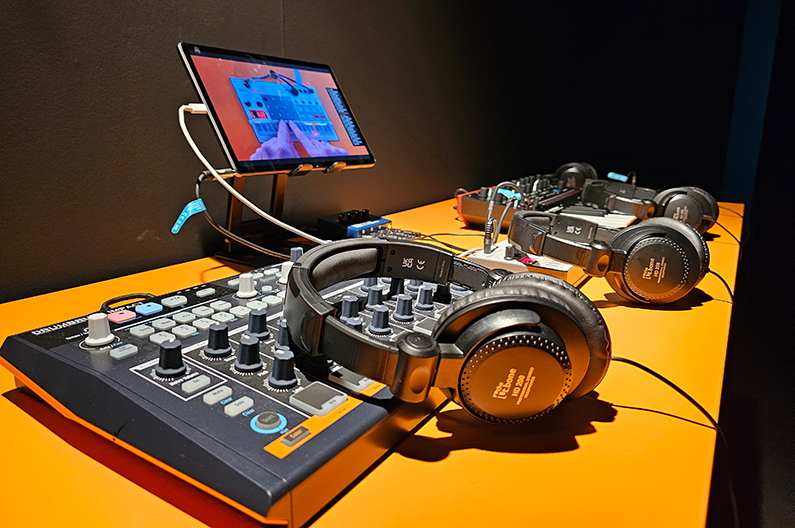+
ELECTRONIC CLASSROOM
OPEN FROM 26.01.2024 | IN ENTRANCE FEE INCLUDED | RESERVATIONS POSSIBLE
The positive influence of music on us is undisputed, obvious and tangible. This applies to listening to music as well as creating and producing it. Music promotes our social and creative potential. However, making music is often associated with many prerequisites - from the purchase of expensive instruments to reading music and intensive practising. This is completely different with electronic music. All you need is a computer and even a smartphone is enough to get started. Reading music is not necessary and practising is more like trying things out and experimenting.

The Electronic Classroom now sees itself as the easiest and most intuitive approach to electronic music that can be experienced together in groups. A total of 5 so-called dawless setups - there is no use of a Digital Working Station (DAW) in the form of a computer - are available to 5 students each. Each of the setups includes a mixer "the t.mix mix 802" from Thomann, two synthesisers, a sampler and a drum machine. The devices are connected by midi and audio cables from Thomann and Adam Hall. Students should be no younger than 10 years old and be able to operate a tablet well.
Easy-to-use hardware instruments such as the Drum Brute Impact from Arturia are used in order to provide learners with an approach that is as easy to understand as possible. In specially produced tutorial videos, learners quickly understand the basic structure of electronic music and learn how to produce it in an analogue, haptic way by turning, pressing and sliding knobs, buttons and buttons. The Electronic Classroom explains the basics of sound generation, tools such as sequencers and arpeggiators, how to programme drum patterns and how a mixing console works.
Even though the declared aim of the dawless setup was and is to be as easy to use as possible, its musical expression possibilities are extensive. The synthesizers in the setup alone can create 5 voices, the sampler sounds up to eight voices and the DrumBrute Impact from Arturia has 10 analogue sounds, so that students can create tracks up to a maximum of 23 tracks.
The Electronic Classroom was made possible by the support of in-kind and main sponsors. The law firm SK Schwarz, the Polytechnische Gesellschaft Foundation, the ODDO BHF Foundation, the Deutsche Bank Foundation and the Naspa Foundation have provided the necessary financial resources and the Thomann Foundation, the Adam Hall Group from Hesse and the French company Arturia have supported the project as sponsors in kind.
The Electronic Classroom can be reserved exclusively by e-mail (contact@momem.org) or telephone (069-20975899-0) for a 90-minute session during and outside opening hours. Weekends and public holidays are excluded from the reservation option. The minimum number of participants for reservations is 15 learners, who must pay the respective entrance fee. The maximum number of participants is 30, whereby 25 people can play electronic music at the same time. For reservations, a reservation fee of €20 will be charged in addition to the admission fee - payable on site. The Electronic Classroom and its use are explained in special video tutorials.